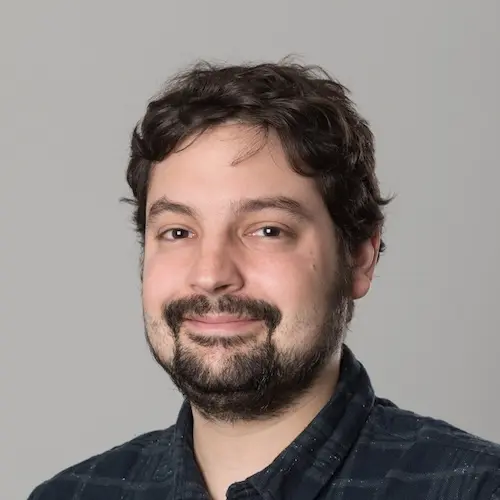
Fabio Pacozzi, Head of Communication, Swiss Municipal Association

Mr. Pacozzi, you wanted to know what information Swiss municipalities want – and how. Why did you use BrainE4's online dialogue for this?We receive quite a few requests from people who want to make something known to the municipalities. Among them was a request for collaboration from Andreas Seonbuchner from BrainE4. He presented this innovative web app to us. What we saw there was really something that made us sit up and take notice.Why?It's not a "normal survey." This online dialogue has a playful quality that stays in your memory and is very goal-oriented. That's why we entered into a partnership with BrainE4. We not only wanted to help make BrainE4 known, but also use the tool for ourselves.
«It's actually not a survey. It's almost like a game.»
What did you want to find out?Our problem was: we were internally aware that we were flying a bit blind in our communications. There are only two of us – Nadja Sutter for the magazine and me for the digital channels. And as is the case in communications, we normally receive very little feedback from our audience. We were particularly interested in which channels municipal staff or municipal authorities use to get their information.How did you prepare the contact between the municipalities and the online dialogue?We were advised by Andreas Seonbuchner. He helped us develop a question. He also pointed out to us that it is not a "survey." It's actually something different. It's almost like a game. After the question was defined, we distributed the call on all possible channels.
«Over 500 participants! That was definitely more than we expected.»
What worked?Direct mailing, magazine, and newsletter worked well. Social media had less influence. One detail: As an association, we always address our audience using the formal "Sie" form. Mr. Seonbuchner advised us to address the audience using the informal "Du" form. So to choose a somewhat more casual tone. We did that. In French, however, our colleagues told us that this wouldn't go over well. So we stuck with the formal form.What were your expectations regarding participation?I had no specific expectations. But I hoped for over 100 participants. In the end, there were over 500! That was definitely more than we expected. I'm also very impressed by the over 14,000 interactions between participants. That provides a reliable data foundation.
1/3

You mentioned Romandie. The online dialogue worked with simultaneous translation. What experiences did you have with that?Because we communicate multilingually, it was a prerequisite for us that we could make the online dialogue trilingual.And how did that work, purely technically?Flawlessly – we had no complaints. Also because we had prepared the technical terms well.
«Wherever open questions are central, BrainE4 works.»
Which topics did participants want more of – and which less?Topics that should receive more space in our association communications are: digitalization, citizen participation, and skilled labor shortage. Further back – also to my surprise – were energy, biodiversity, or migration. I would have bet that migration topics would rank higher.What conclusions do you draw from the data?We noticed that the newsletter and magazine are actively used. The association homepage is accessed less directly. Social media is also used somewhat less in comparison. This knowledge helps us allocate resources. Because with two responsible people, these are rather limited. We can't operate social media at a highly professional level. We lack the resources for that. So we concentrate on the magazine and newsletter, because that's what people actually read.What was newly added to the "wish list"?Many municipalities want more interaction and exchange of experiences – among themselves, but also with us. We've already taken first steps, looked at various formats. We're now trying to develop a format that enables this. Specifically, we're currently examining the possibility of conducting webinars. With our hypotheses that we also entered into the online dialogue, we weren't fundamentally wrong. But there was quite a bit of new input. Especially on the topic of digitalization, there were several inputs.Your hypotheses performed relatively well, but there were still new inputs that……that reset the guardrails. Exactly.What decisions have you already made or considered based on this online dialogue?Various ones. From now on, we're trying to write less "technically" in the newsroom, but rather in simpler language. A second point is the interaction possibilities. Keyword: webinars.You said that simpler language was requested.Yes, it turned out that people would prefer the language to be more accessible. The opinion entered was: "The texts in the newsroom are too complicated." That received clear approval. We take that seriously.
«A big advantage of BrainE4 is that you get a ranking of ideas and opinions.»
What is your conclusion from this online dialogue?The format works! I like the playful aspect. I also consider it a great quality that everyone can decide for themselves how long and intensively they want to engage with it. It's not a predetermined questionnaire that you work through from 0 to 100%. Everyone can start with the question that appeals to them. Whether participants participate for 3 or 15 minutes is irrelevant to the final result. The total inputs are what matter.
Another point is the support from BrainE4, which I greatly appreciated. Starting with the kick-off meeting, where we were briefed and prepared the online dialogue.
Then there was a kind of mid-term review and finally a detailed results report.
How do you assess the final report you received?It's like a kind of management summary. A larger organization might perhaps delve into the report in its full depth. The summary was sufficient for us. The rankings were very helpful.In addition to the final report after four weeks, there was also the possibility to see interim results during the online dialogue. Did you use that?I logged in every few days and looked at it with pleasure. It was fun to see that more and more people were participating. It was exciting to follow the development of the ideas.
2/3

Were you a bit disappointed that your own hypotheses were overtaken by ideas from participants?No, I don't evaluate that as either positive or negative. We wanted to know what our readers want. Sometimes there were contradictory answers. Some wanted longer, more in-depth texts, others wanted shorter ones because they have little time. But we were also able to explore this contradiction.Who would you recommend BrainE4 to?Wherever open questions are central, BrainE4 works. If someone wants a kind of brainstorming with a large group of people, or also to reflect on their own work and how it's received, then BrainE4 is a very good tool.BrainE4 is still new. Was it a risk to use this web app?We had wanted to hear ideas from our users for a long time. This was now a good opportunity. We knew that various municipalities had already successfully tested BrainE4. So the risk was manageable.
Facts and Contact:
Swiss Association of MunicipalitiesNumber of members: around 1,500 (71% of all municipalities)
Online Dialogue:7 open questions512 participants112 opinions and ideas14'182 interactions
Head of Communications Swiss Association of Municipalities:Fabio PacozziPhone: 031 380 70 02Mail: fabio.pacozzi@chgemeinden.ch
Interview: thk

3/3

